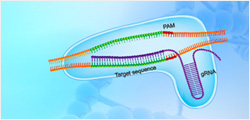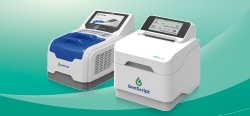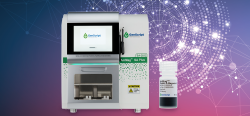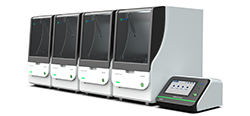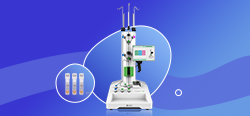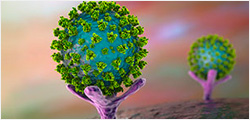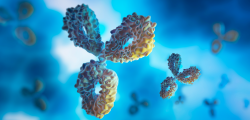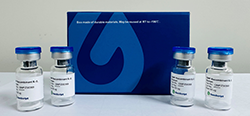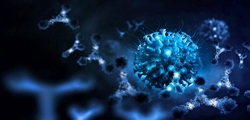| Specificity |
The specificity of the antibody is defined as the ratio of antigen concentration to cross-reactant concentration at 50% inhibition of maximum binding. |
| Host Species |
Mouse |
| Immunogen |
3', 5'-cyclic AMP-8-KLH |
| Conjugate |
Unconjugated |
|
Working concentrations for specific applications should be determined by the investigator. The appropriate concentrations may be affected by secondary antibody affinity, antigen concentration, the sensitivity of the method of detection, temperature, the length of the incubations, and other factors. The suitability of this antibody for applications other than those listed below has not been determined. The following concentration ranges are recommended starting points for this product. |
| Application |
Recommended Usage |
| ELISA |
0.04-0.1 μg/ml |
|
| Form |
Lyophilized |
| Storage Buffer |
lyophilized with PBS, pH 7.4, containing 0.02% sodium azide |
| Reconstitution |
Reconstitute the lyophilized powder with deionized water (or equivalent) to an final concentration of 0.5 mg/mL. |
| Storage Instructions |
The lyophilized product remains stable for up to 1 year at -20 °C from the date of receipt. Upon reconstitution, ti can be stored for 2-3 weeks at 2-8 °C or for up to 12 months at -20 °C or below. Avoid repeated freezing and thawing cycles. |
| Purification |
Protein A affinity column |
| Isotype |
Mouse IgG2a,κ |
| Clonality |
Monoclonal |
| Clone ID |
4H2B6 |
| Note |
GenScript can offer this product according to your requirement, including product size, buffer components,etc. |

cAMP Competitive ELISA
1.ELISA plate was coated with goat anti mouse IgG antibody
2.Anti-cAMP monoclonal antibody (Cat. No. A01509) at appropriate dilution and cAMP standards or testing compounds were added into appropriate reaction wells.
3.After a period of incubation, cAMP-HRP conjugate (Cat.No.M01059) was added followed by proper period of incubation.
4.ELISA plate was washed with ELISA washing buffer, then TMB substrate was added and developed at room temperature.
5.Stop the reaction with 1.0 N HCl and read the plate at 450nm.
| Target Background |
Adenosine 3, 5-cyclic monophosphate (cyclic AMP; cAMP) is one of the most important intracellular secondary messengers for transduction events. cAMP is also involved in regulating neuronal, glandular, cardiovascular, immune, and other functions and actions. A number of hormones, such as ACTH, TSH, FSH, and LH, are known to activate cAMP through the action of the enzyme adenylate cyclase, which converts ATP to cAMP. There remains considerable interest in the measurement of intracellular cAMP in tissues and cell cultures, and this may help to provide an understanding of the physiology and pathology of many disease states. Due to the involvement of cAMP in amplifying the response of ligand binding, the second messenger cAMP has been largely employed to monitor the activation of GPCR to facilitate therapeutic drug discovery.GenScript THE? cAMP Antibody, mAb, Mouse is developed using 3, 5-cyclic AMP-8-KLH as immunogen. |
| Synonyms |
THE? Anti-cAMP Monoclonal Antibody (Mouse); |
For laboratory research use only. Direct human use, including taking orally and injection and clinical use are forbidden.





